How often and correctly to water the pumpkin in the open field and is it necessary?
Pumpkin is a frequent visitor to household plots, it is grown for food and as food for pets. How often to water the pumpkin outdoors? The pumpkin root system is designed in such a way that it is able to accumulate liquid in itself. Properly organized care, primarily watering the plant, guarantees a rich harvest in the fall.
Content
- 1 What should be the water for irrigation?
- 2 What watering methods are there?
- 3 How to water a pumpkin in the heat?
- 4 How to water pumpkins during flowering?
- 5 Watering the pumpkin during fruit formation
- 6 Pumpkin watering frequency
- 7 How to water a pumpkin correctly?
- 8 Recommendations for gardeners for watering pumpkin with the hole method and furrows
- 9 6 common mistakes gardeners make when watering pumpkins
What should be the water for irrigation?
At first glance, it seems that you can water cultivated plants with any water, but this is far from the case. Do not use cloudy or icy water. Muddy water can contain fungi and bacteria, and cold water promotes the development of fungal diseases. You should use only clean water heated in the sun, without debris, without an unpleasant odor and a large amount of salts.
Watering the pumpkin is carried out with the following types of water:
- Rainy.
- Plumbing (warmed up in the sun).
- Water from springs or springs.
- Lake, river.
Rainwater is the best chemical for irrigation. It is softer and suitable for all cultivated plants. Moisture may not come up if plants or factories are located near the site. Putting empty barrels under the gutters, it will be possible to collect moisture for irrigating the soil.

Tap water is too cold for watering, so it must be poured in the evening and defended. During the day in the sun, it warms up and then it is suitable for pumpkin.
Grow a pumpkin outdoors easy, most importantly, to pay attention to caring for her. Water from natural sources also warms up and is used for irrigation only warm. It is rich in nutrients and the plants receive the necessary elements for active growth.
Before watering the beds, liquid from natural sources must be checked for the presence of fungi and bacteria.
What watering methods are there?
The type of watering depends on the planting area. Small beds can be easily watered by hand, while larger crops need to be watered automatically.
It is necessary to make quite large gaps between the plants. This makes it more convenient to water the plants, and they will not interfere with each other.
Watering pumpkin bushes in the open field is of several types:
- Auto.
- Semi-automatic.
- Manual.
- Rain.
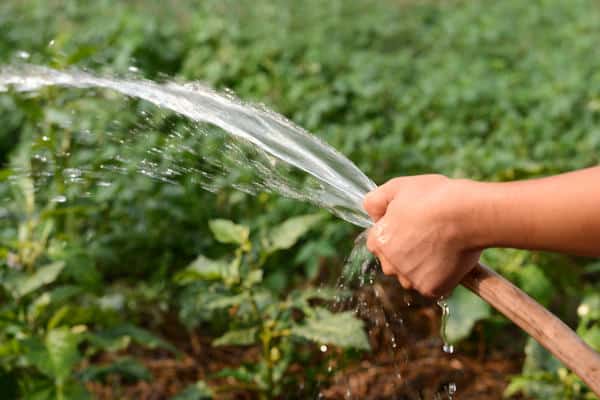
The most laborious type is manual. It is carried out using a watering can or a hose. Before watering, be sure to put a nozzle on the watering can, especially if the watering can is used for young sprouts. A large jet will damage the young shoots.
It is allowed to irrigate adult bushes with this method.
The same applies to the hose. If you irrigate the soil with one stream, then root washing is possible. Press the end of the hose with your finger or purchase a special nozzle. The jet is directed to the root system, not the foliage.
The easiest way is automatic. To do this, special sprinklers are placed on the beds. Turning the water jet on and off is controlled by a timer set by the summer resident. This method is convenient in that you do not have to spend a lot of time on watering and the beds will always be moistened as needed.
The rain method is one of the least practical and is suitable for those summer residents whose plot is not near the house. But there is a risk here, it may not rain for a long time, and the soil will dry out. And during prolonged rains, the soil is heavily flooded, and it does not have time to dry out.
How to water a pumpkin in the heat?
Especially the pumpkin needs irrigation in drought. You can understand that the plant lacks moisture by the appearance of the leaves, they become wilted and wilted. On such days, the amount of water for irrigation is increased and the state of the culture is monitored.
How often to water the pumpkin when it's hot and sultry weather? In this case, it is advisable to water the beds every 2 days. Watering is carried out in the evening, when the sun's rays are not so bright and the bushes can be saturated with liquid overnight. It is not recommended to irrigate the beds during the day, as the leaves get burned when moisture gets on them and the sun bakes.
Some summer residents water the beds early in the morning, but this method is not always successful. In summer, the sun begins to bake early, and the water does not always have time to dry out by this moment. Also, under the influence of sunlight, the liquid from the soil evaporates, and the root system does not have time to absorb it.

How to water pumpkins during flowering?
The beginning of the flowering period is a crucial moment during which the foundation for the future harvest is laid. Therefore, it should be given special attention. During the period of inflorescence, the pumpkin becomes capricious and any wrong action can ruin the harvest.
Features of irrigation at the stage of ovary formation will include several rules.
How to water and feed a pumpkin correctly:
- The water must be warm, not ice cold.
- Once a week, before irrigation, the soil is loosened and weeds are removed from the beds (only extra ovaries are also removed, while leaving the healthiest and largest ones).
- The amount of water must be large.
- Top dressing is applied every 2 weeks.
A lot of fluid is required during the formation period, but the main thing here is not to overdo it. Excessive humidity leads to the appearance of fungal diseases and stem rot. If it becomes noticeable that the soil does not have time to dry out by the next watering, then it should be postponed for a while. Also, during this period, only the excess ovary is removed, while leaving large inflorescences.
Watering the pumpkin during fruit formation
From the beginning of the moment of fruit formation, watering should be abundant. During this period, the plant needs more moisture, as it is spent on the growth of pumpkins. It is recommended to water the pumpkin beds once every 10 days. In extreme heat, it is recommended to increase the number of times.
Do I need to water the pumpkin in August? This question interests many summer residents. Watering the pumpkin in August is only necessary at the beginning of the month. When the pumpkins are fully formed, you can stop doing it. Crop care in August is minimal.

Pumpkin watering frequency
Water is an integral part of the life of any plant culture. Plants receive oxygen, nutrients and trace elements from water. Pumpkin belongs to moisture-loving vegetable crops that require watering at all stages of the growing season. But regularly the lack of water needs to be replenished so that the plant does not dry out.
How often to water the pumpkin outdoors? The frequency of irrigation depends on the growing climate of the crop and weather conditions. If there are heavy rains for a long time, then you can forget about watering for a long time. And renew after the soil is completely dry. To preserve the harvest and protect the fruits from rotting, you need not to overdo it and not overflow the soil. If the stems began to rot from waterlogging of the soil, then it will not be possible to save them, so you must always observe the measure.
Watering should be abundant, but infrequent. Their frequency depends on the climatic conditions in which the plant grows.
Frequency of watering pumpkin outdoors:
- After planting in the soil and before the first hilling, the pumpkin is watered 1 or 2 times a week. The required amount of water is 8-9 liters.
- For 3 weeks after emergence, the plants stop watering for a while.
- Watering is resumed with the beginning of the formation of ovaries and the bushes are watered once every 10 days.
- 30 days before harvesting the pumpkin from the site, they stop watering completely. Observing the frequency of soil irrigation in pumpkin beds, the yield can be doubled. This aspect is especially important during prolonged heat.

You can understand that the bushes need water by their appearance.
The bushes are especially in need after planting before hilling. Watering is carried out several times a week. During the emergence of sprouts, watering is needed only if it is very hot outside. The second period when the pumpkin needs water is the formation of fruits. And a month before harvesting, watering is stopped.
How to water a pumpkin correctly?
The future yield depends on the correct watering. Many gardeners use a hose to water their beds with cold tap water because it is quick and convenient. It is advisable to use other containers. By saving time, the risk of crop failure increases.
Features of pumpkin irrigation in the open field:
- The optimal time for watering is in the evening after 6:00. The sun's rays are not so aggressive and if moisture gets on the leaves, they will not get burned. This is very important, because burns lead to the death of the bushes.
- It is recommended to pour water into barrels in the evening. During the day, the water will warm up and will be the optimal temperature for the pumpkin. It is strictly forbidden to use cold water in order to avoid the development of fungal diseases.
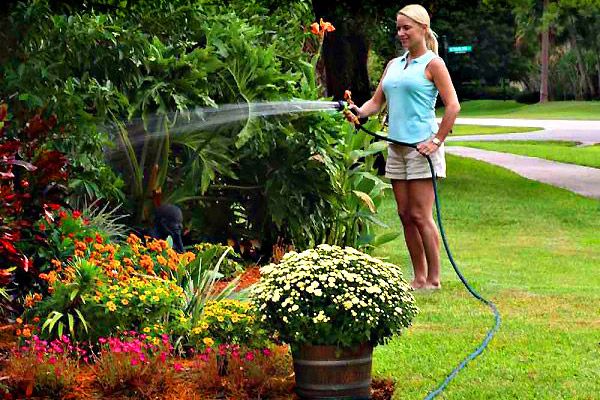
- Once a week before watering, the soil is weeded and weeds are removed. They also apply organic and mineral fertilizers.
- Do not water the pumpkin at the root. The soil will wash out, and the root system will begin to stick poorly in the soil.
- Young sprouts are watered with a watering can with a fine nozzle with a small amount of water if they begin to dry out due to the heat.
Watering is the main part of caring for any crop plant, on which the success of the cultivation of crops on the site depends.
Recommendations for gardeners for watering pumpkin with the hole method and furrows
Hole irrigation and furrow irrigation are the most common. But these two methods have advantages and disadvantages.
The advantage of hole irrigation is that the rhizome receives a lot of moisture and water consumption is minimal, minus - the process takes a lot of time.
Furrow irrigation is mainly used in sloping areas. The downside is the use of a large amount of liquid, but the bushes do not receive part of the liquid.

6 common mistakes gardeners make when watering pumpkins
Watering the soil in the open field is necessary according to all the rules. There are several common mistakes that you should avoid.
- Irrigation of crops in the morning and afternoon, when the sun's rays are bright.
- Use cold tap water.
- Overmoisten the soil or allow it to dry out.
- Irrigate young, immature sprouts.
- Water the bushes with a watering can or a hose without a nozzle.
- Direct jets of water to the root system of the bushes.
All these errors lead to a decrease in yield and plant death.
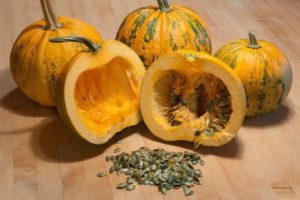
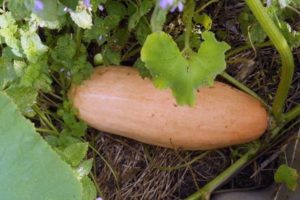





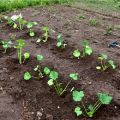
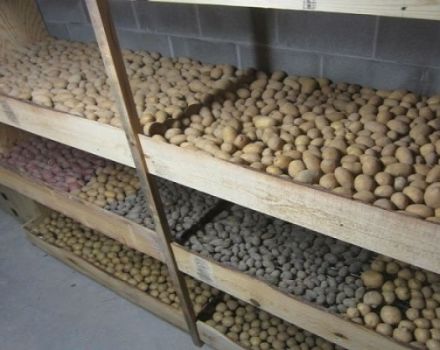
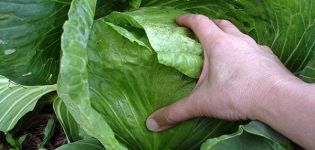
If there is no hot sun, then do not water the pumpkin too often, this can provoke the development of diseases of the root system. As a protection, you can apply to the soil "BioGrow».
Nothing beats rain, which is why irrigation water is so perfect. In the heat, you need to water every day in the morning, and not in the evening as indicated, a small amount is enough so that it does not turn yellow. The main thing is to choose the morning, when there is still no strong sun.